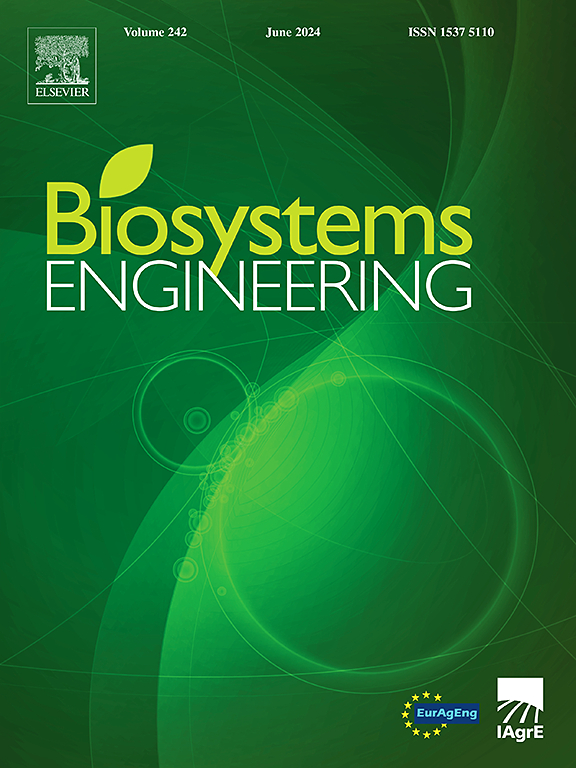害虫综合治理中固体基质施胶器信息素释放的建模
IF 4.4
1区 农林科学
Q1 AGRICULTURAL ENGINEERING
引用次数: 0
摘要
在耕地中引入性信息素,造成交配中断,从而保护作物免受害虫侵害。本文研究了一种被封装在固体基质中的模型信息素(醋酸十二酯)的释放特性。释放动力学是在现场通过提取和定量分配器中剩余的信息素,并在实验室通过受控条件下的排放室测试获得的。结果表明,在田间条件下,前60 d的释放速率为1.53 mg d -1,符合准零级释放动力学;排放数据表明,基质/空气分配系数(Kma)和气相对流传递系数(hm)这两个关键参数决定了分配器的释放速率。Kma的估计值从1×106到4.55×106不等,hm从3.2×10-3到5×10-3 m s-1不等,这取决于空气速度和温度条件。Kma的温度依赖性最为显著,并通过估算信息素在基质分配器和空气之间分配的焓ΔHma (102 kJ mol-1)来解决。研究结果建立了以Kma和hm为主要参数的信息素释放模型。现场实测结果与模型预测结果吻合较好。该模型可作为实际条件下信息素释放速率调节的有效工具。本文章由计算机程序翻译,如有差异,请以英文原文为准。
Modelling of pheromone release from solid matrix dispenser for integrated pest management
Sex pheromones are introduced in the cultivated areas to create mating disruption and thus to protect crops from pests. This article deals with the release characteristics of a model pheromone (dodecyl acetate) encapsulated in a solid matrix developed as a passive dispenser. Released kinetics were obtained both in the field by extracting and quantifying the remaining pheromone in the dispenser over time and in laboratory by emission chamber tests under controlled conditions. Results showed that the release profiles follow pseudo-zero-order kinetics with a quasi-constant release rate of 1.53 mg day-1 under field conditions for the first sixty days. Emission data showed that two key parameters, i.e., the matrix/air partition coefficient (Kma) and the convective transfer coefficient in the gas phase (hm) govern the release rate of the dispenser. Estimates of Kma varied from 1×106 to 4.55×106 and hm from 3.2×10-3 to 5×10-3 m s-1 depending on the air velocity and temperature conditions. Temperature dependence of Kma was most significant and was addressed by estimating the enthalpy of the pheromone partitioning between the matrix dispenser and air (102 kJ mol-1). The results led to the development of a model based on Kma and hm as the main parameters describing pheromone release from the matrix dispenser. A good agreement was found between the measurements obtained in field and model predictions. This model could be an effective tool for adjusting the release rate of pheromone dispensers under practise conditions.
求助全文
通过发布文献求助,成功后即可免费获取论文全文。
去求助
来源期刊

Biosystems Engineering
农林科学-农业工程
CiteScore
10.60
自引率
7.80%
发文量
239
审稿时长
53 days
期刊介绍:
Biosystems Engineering publishes research in engineering and the physical sciences that represent advances in understanding or modelling of the performance of biological systems for sustainable developments in land use and the environment, agriculture and amenity, bioproduction processes and the food chain. The subject matter of the journal reflects the wide range and interdisciplinary nature of research in engineering for biological systems.
 求助内容:
求助内容: 应助结果提醒方式:
应助结果提醒方式:


